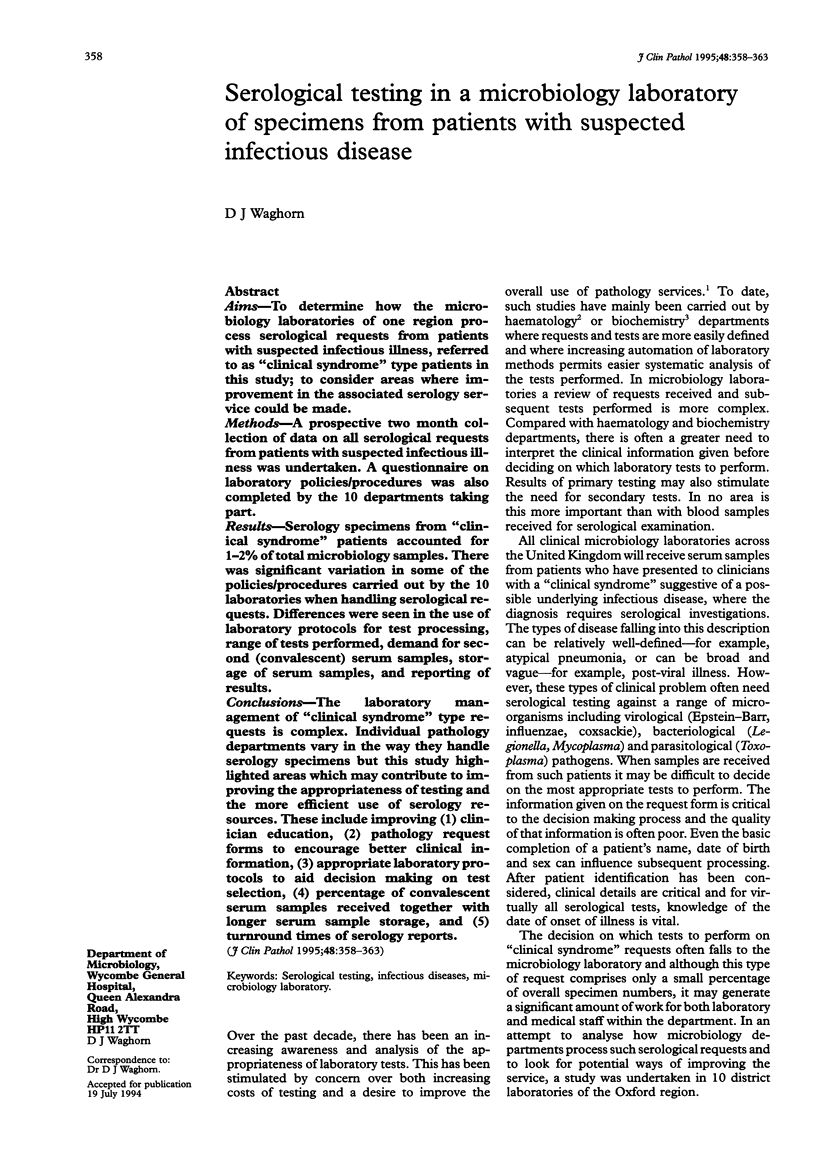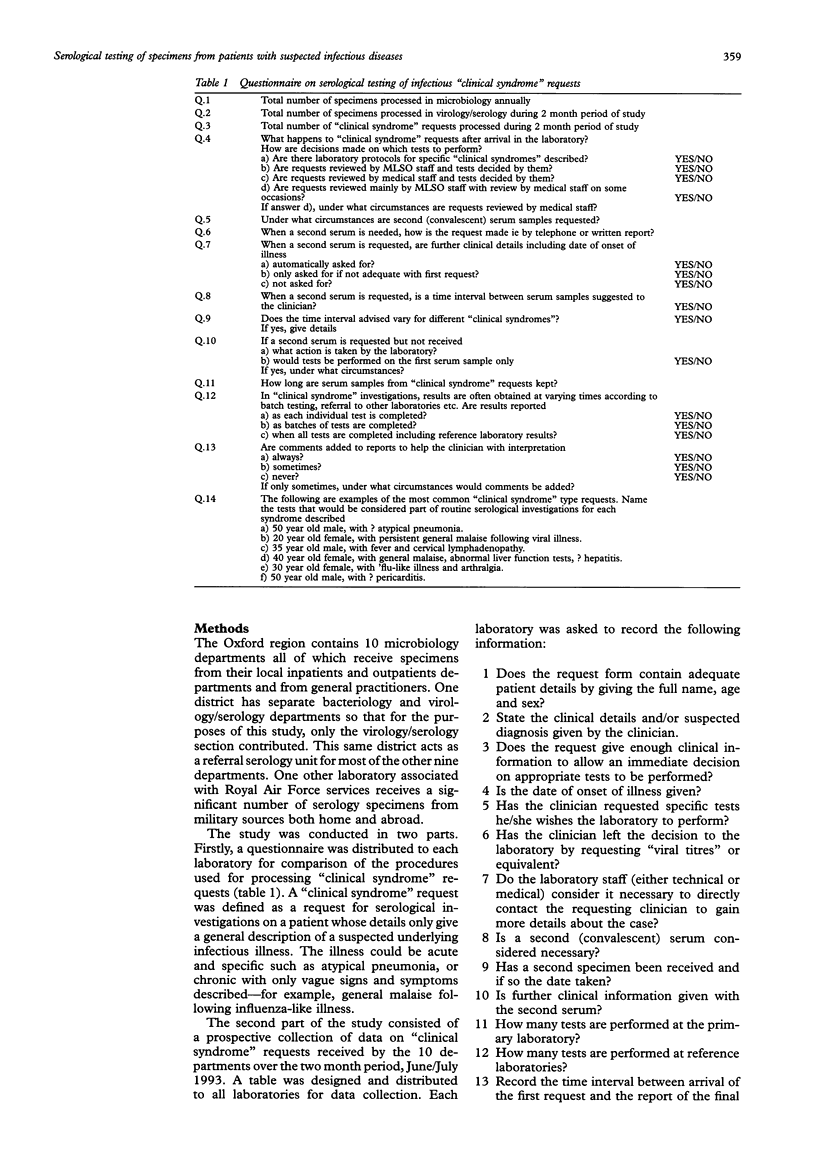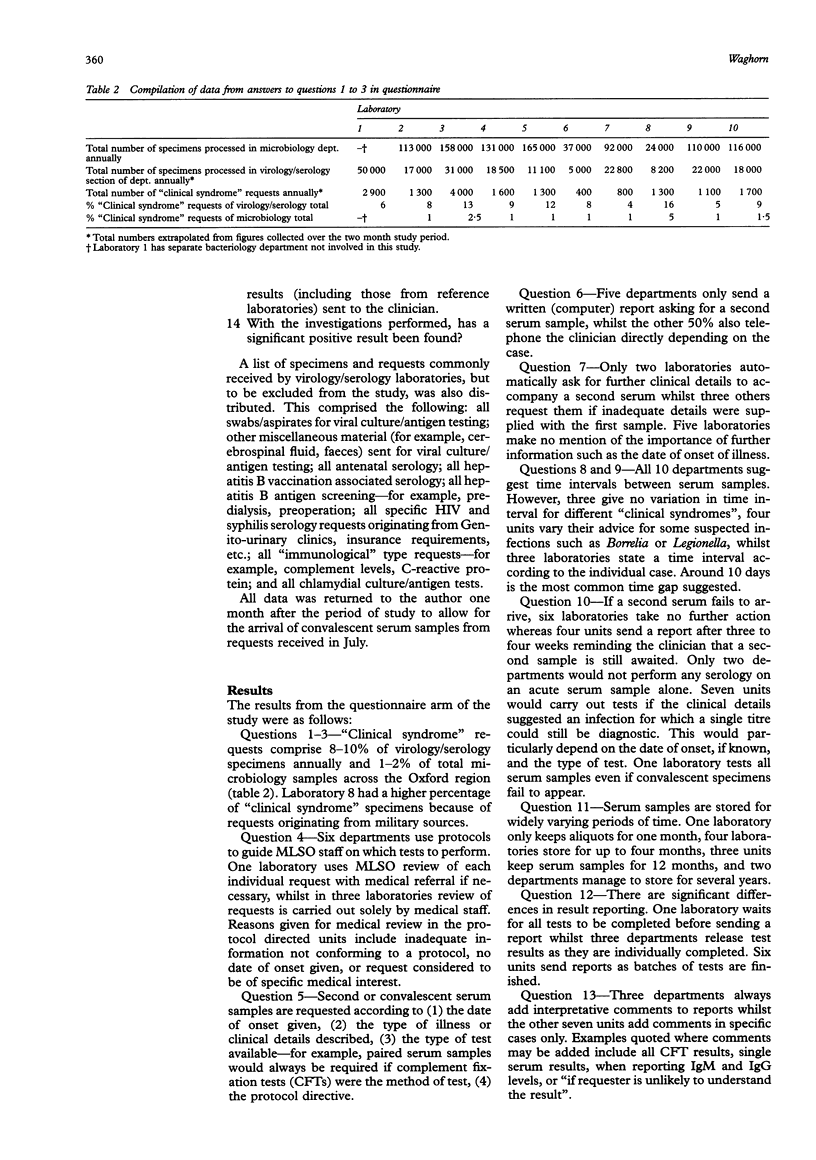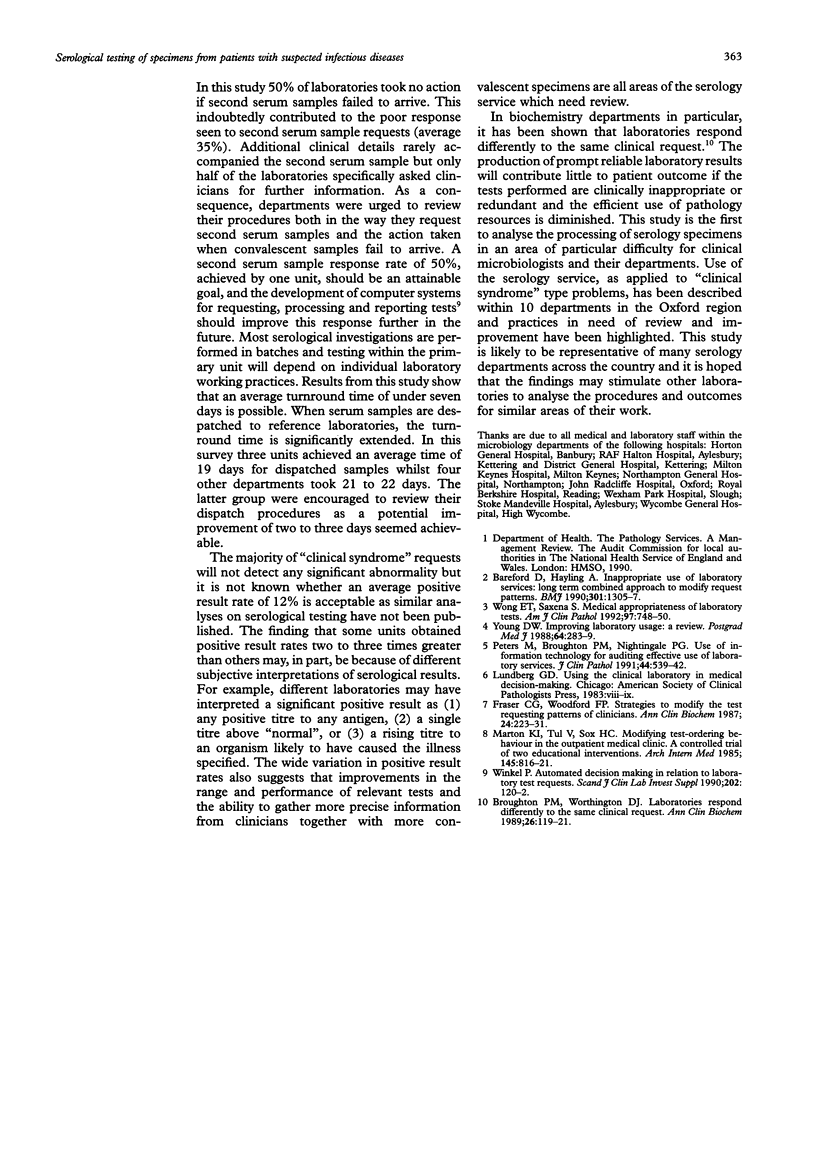Abstract
AIMS--To determine how the microbiology laboratories of one region process serological requests from patients with suspected infectious illness, referred to as "clinical syndrome" type patients in this study; to consider areas where improvement in the associated serology service could be made. METHODS--A prospective two month collection of data on all serological requests from patients with suspected infectious illness was undertaken. A questionnaire on laboratory policies/procedures was also completed by the 10 departments taking part. RESULTS--Serology specimens from "clinical syndrome" patients accounted for 1-2% of total microbiology samples. There was significant variation in some of the policies/procedures carried out by the 10 laboratories when handling serological requests. Differences were seen in the use of laboratory protocols for test processing, range of tests performed, demand for second (convalescent) serum samples, storage of serum samples, and reporting of results. CONCLUSIONS--The laboratory management of "clinical syndrome" type requests is complex. Individual pathology departments vary in the way they handle serology specimens but this study highlighted areas which may contribute to improving the appropriateness of testing and the more efficient use of serology resources. These include improving (1) clinician education, (2) pathology request forms to encourage better clinical information, (3) appropriate laboratory protocols to aid decision making on test selection, (4) percentage of convalescent serum samples received together with longer serum sample storage, and (5) turnaround times of serology reports.
Full text
PDF





Selected References
These references are in PubMed. This may not be the complete list of references from this article.
- Bareford D., Hayling A. Inappropriate use of laboratory services: long term combined approach to modify request patterns. BMJ. 1990 Dec 8;301(6764):1305–1307. doi: 10.1136/bmj.301.6764.1305. [DOI] [PMC free article] [PubMed] [Google Scholar]
- Broughton P. M., Worthington D. J. Laboratories respond differently to the same clinical request. Ann Clin Biochem. 1989 Mar;26(Pt 2):119–121. doi: 10.1177/000456328902600204. [DOI] [PubMed] [Google Scholar]
- Fraser C. G., Woodford F. P. Strategies to modify the test-requesting patterns of clinicians. Ann Clin Biochem. 1987 May;24(Pt 3):223–231. doi: 10.1177/000456328702400301. [DOI] [PubMed] [Google Scholar]
- Marton K. I., Tul V., Sox H. C., Jr Modifying test-ordering behavior in the outpatient medical clinic. A controlled trial of two educational interventions. Arch Intern Med. 1985 May;145(5):816–821. [PubMed] [Google Scholar]
- Peters M., Broughton P. M., Nightingale P. G. Use of information technology for auditing effective use of laboratory services. J Clin Pathol. 1991 Jul;44(7):539–542. doi: 10.1136/jcp.44.7.539. [DOI] [PMC free article] [PubMed] [Google Scholar]
- Wong E. T., Saxena S. Medical appropriateness of laboratory tests. Am J Clin Pathol. 1992 Jun;97(6):748–750. doi: 10.1093/ajcp/97.6.748. [DOI] [PubMed] [Google Scholar]
- Young D. W. Improving laboratory usage: a review. Postgrad Med J. 1988 Apr;64(750):283–289. doi: 10.1136/pgmj.64.750.283. [DOI] [PMC free article] [PubMed] [Google Scholar]


